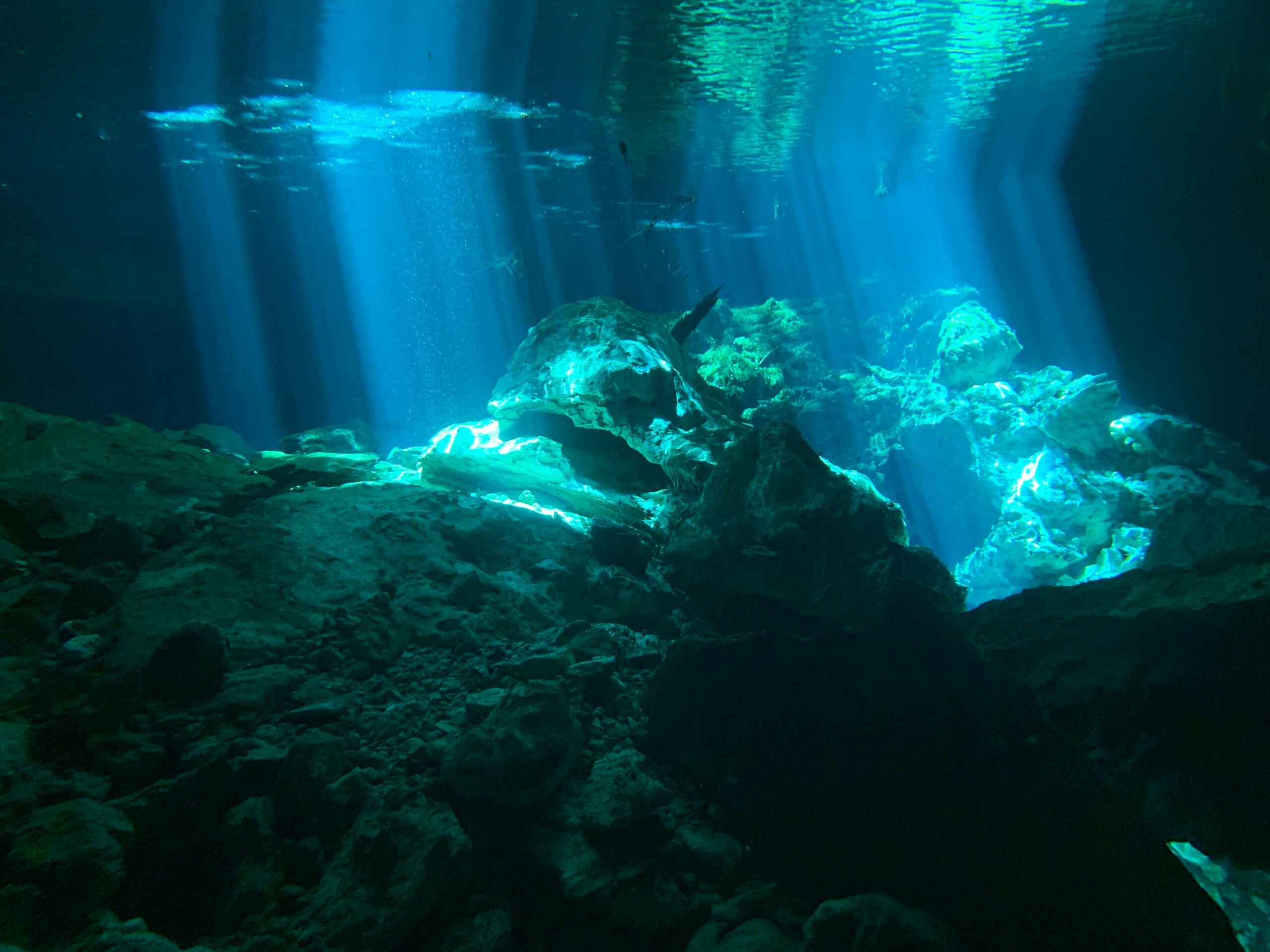Rockpool Perth: Discover Hidden Treasures and Stunning Marine Life
If you ever wondered where to explore the most captivating rockpool Perth adventures, you’re in for a treat. This article dives deep into the hidden treasures within Perth’s rockpools, revealing a vibrant underwater world teeming with astonishing marine life and natural wonders. Whether you’re an avid nature lover or just curious about what lies beneath the waves, the unique ecosystems found in Perth’s coastal rockpools offer an unforgettable experience. But what makes these rockpools so special? And how can you uncover the best spots to observe the stunning creatures that call them home?
Exploring rockpool Perth locations is not just a fun seaside activity; it’s also a fantastic way to connect with nature and learn about the diverse species that inhabit our shores. From colourful sea stars and quirky crabs to delicate anemones and shimmering fish, the rockpools around Perth boast an incredible variety of life that often goes unnoticed. Have you ever wondered which Perth rockpool is the most abundant in marine biodiversity? Or how to spot rare critters in these tidal pools? This guide will answer those questions and more, providing insider tips for an unforgettable rockpooling adventure in Perth.
In addition to discovering the extraordinary marine creatures in Perth’s rockpools, you’ll also learn about the best times to visit and how to explore responsibly to protect these fragile habitats. So, get ready to embark on a fascinating journey along Perth’s coastline, where every rockpool hides a story waiting to be told. Are you ready to uncover the secrets of Perth’s stunning rockpools and experience the magic of its thriving marine life? Let’s dive in!
Top 7 Must-Visit Rockpools in Perth for Unforgettable Marine Life Encounters
Exploring the coastline of Perth reveals a treasure trove of natural wonders, specially for those who love marine life. Rockpools in Perth are not just ordinary puddles of seawater trapped between rocks; they are vibrant microhabitats where myriad creatures thrive, providing unforgettable encounters for visitors. If you are curious about the underwater world and want to discover hidden treasures, then these top 7 must-visit rockpools around Perth are the places you shouldn’t miss.
What Are Rockpools and Why They Are Special in Perth?
Rockpools, or tide pools, are shallow pools of seawater that remain trapped amongst rocks after the tide goes out. They create a unique, ever-changing environment where marine life has adapted to survive in conditions that change rapidly — from wet to dry, warm to cool, salty to fresh with rain.
Perth’s coastline, stretching along the Indian Ocean, offers a perfect setting for these natural aquariums. The warm temperate climate, combined with the rocky shores, supports a diverse range of species including starfish, crabs, sea anemones, tiny fish, and many types of seaweed. Some of these creatures are only found in Western Australia, making the rockpools here a unique biodiversity hotspot.
Top 7 Must-Visit Rockpools in Perth for Unforgettable Marine Life Encounters
Cottesloe Beach Rockpools
- Location: Cottesloe, just 15 km from Perth CBD
- Features: Easily accessible rockpools with lots of colourful sea stars and small fish.
- Best time to visit: Low tide in the morning or late afternoon.
- Fun fact: Cottesloe is famous for its white sandy beach, but many overlook its hidden rockpool areas.
Mettams Pool
- Location: Sorrento, northern suburbs of Perth
- Features: Large rocky platform with clear pools hosting sea urchins, octopuses, and crabs.
- Historical note: Used since the 1930s as a natural swimming pool by locals.
- Tip: Bring snorkelling gear as deeper pools are great for an underwater peek.
Marmion Marine Park Rockpools
- Location: North Beach to Burns Beach
- Features: Protected marine park with abundant marine flora and fauna, including sea cucumbers and colourful sponges.
- Conservation insight: The area is protected to preserve the fragile ecosystems within these rockpools.
Leighton Beach Rockpools
- Location: Fremantle region
- Features: Rockpools rich with small fish and crustaceans, suitable for families and children to explore safely.
- Interesting fact: Fremantle’s history as a port city means the beaches here have many shipwreck remnants nearby.
Swanbourne Beach Rockpools
- Location: Swanbourne, west coast suburbs
- Features: Rocky outcrops with tidal pools home to sea anemones, hermit crabs, and small blennies.
- Best practice: Walk carefully on slippery rocks and avoid stepping on marine life.
Port Beach Rockpools
- Location: Near North Fremantle
- Features: Less crowded, ideal for those wanting a quiet exploration with chances to spot octopuses and small rays.
- Practical tip: Check tide charts before going for the best low tide experience.
Secret Harbour Rockpools
- Location: Further south of Perth, near Rockingham
- Features: Known for its clear waters and diverse marine species, including nudibranchs and colourful seaweeds.
- Local legend: The area was a favourite fishing spot for indigenous people long before modern times.
How to Make the Most Out of Your Rockpool Exploration in Perth
- Always check the tide times; low tide usually reveals the best rockpools.
- Wear sturdy footwear because rocks can be slippery and sharp.
- Don’t take any creatures home; observe and enjoy them in their habitat.
- Bring a small bucket or magnifying glass for kids to enhance their experience (but remember to put everything back!).
- Avoid stepping on seaweed; it’s home to many tiny animals.
- Consider visiting with a local guide if you want to learn more about the marine species and ecosystems.
Comparison of Rockpool Accessibility and Marine Life Diversity in Perth
| Rockpool Location | Accessibility | Marine Life Diversity | Ideal for Families | Unique Feature |
|---|---|---|---|---|
| Cottesloe Beach | Easy | Moderate | Yes | Iconic beach with easy access |
| Mettams Pool | Moderate | High |
How to Explore Perth’s Rockpools Safely and Spot Rare Sea Creatures
Perth is known for its beautiful beaches and vibrant marine life, but one of its most fascinating natural attractions are the rockpools scattered along the coastline. Exploring these rockpools can be an unforgettable experience, offering a glimpse into a miniature underwater world filled with creatures you might not see anywhere else. However, to truly enjoy the adventure and stay safe, there are few important tips and tricks you should keep in mind. Whether you are a local or a visitor, learning how to explore Perth’s rockpools safely and spot rare sea creatures will enhance your visit and protect the fragile ecosystem.
What Are Rockpools and Why They Matter in Perth?
Rockpools, sometimes called tide pools, are natural basins or depressions on rocky shores where seawater collects during low tide. In Perth, the unique geological formations along the coast create many such pools, acting like tiny aquariums teeming with marine life. These pools are important habitats for various species, some endemic to the region, and provide a refuge during low tide when the sea recedes.
Historically, Indigenous Australians have known these coastal areas well, using rockpools for food gathering and observing marine life for centuries. Today, rockpooling is popular among families, nature lovers, and scientists alike for its educational and recreational value.
How to Explore Rockpools in Perth Safely
Exploring rockpools isn’t just about looking down on the water—there’s a bit of skill, patience, and respect needed to do it properly. Here are some practical tips:
- Always check the tide times before you go. Low tide is the best time to explore because that’s when pools are most visible and accessible.
- Wear sturdy, non-slip footwear — rocks can be slippery and sharp, causing injury if you’re not careful.
- Don’t disturb the animals or remove anything from the pools. This helps preserve the delicate ecosystem.
- Move slowly and gently; sudden movements can scare away creatures hiding under rocks or seaweed.
- Keep an eye on the waves, especially on exposed shores, as unexpected surges can be dangerous.
- Avoid exploring alone; it’s safer and more enjoyable with a companion.
Spotting Rare and Fascinating Marine Life in Perth’s Rockpools
Perth’s rockpools are home to a variety of marine species, some rare and others more common. If you know where and what to look for, you might spot some incredible creatures. Here’s a list of some marine life you might encounter:
- Sea Anemones: Colourful, flower-like creatures that wave their tentacles to catch food.
- Blennies and Gobies: Small fish that often hide in crevices.
- Hermit Crabs: Easily recognised by their borrowed shells, scuttling around the rocks.
- Sea Stars: Usually five-armed, these starfish cling to the rocks.
- Octopuses: Elusive but sometimes visible, octopuses change colour and shape to blend in.
- Sea Urchins: Spiny creatures that can be black, green, or purple.
- Rare Nudibranchs: Brightly coloured sea slugs that are a delight to spot.
- Crustaceans and Molluscs: Including barnacles, mussels, and limpets attached to the rocks.
Many of these creatures are small and well-camouflaged, so a good pair of waterproof binoculars or a magnifying glass can be handy.
Popular Rockpool Spots Around Perth
If you’re wondering where to start your rockpool adventure, here is a small guide to some of the best locations around Perth’s coastline:
| Location | Description | Best Time to Visit |
|---|---|---|
| Cottesloe Beach | Iconic beach with rocky edges and many pools | Early morning low tide |
| Mettams Pool | Natural pool with rock shelves and marine life | Late afternoon low tide |
| Swanbourne Beach | Quiet spot with hidden rockpools | Mid-morning low tide |
| Leighton Beach | Accessible pools with diverse sea creatures | Low tide during spring tides |
| City Beach | Rocky outcrops ideal for spotting small fish | Low tide, avoid weekends for crowd |
Comparing Rockpooling in Perth to Other Locations
Rockpooling exists in many coastal regions worldwide, but Perth offers a unique experience due to its particular marine biodiversity and climate. Unlike colder regions like the UK or northern Europe, Perth’s warmer waters host colourful creatures like nudibranchs and octopuses more commonly. The rock formations here also differ, with smooth granite and limestone creating varied habitats compared to the basalt or sandstone found elsewhere.
Compared to places like Sydney or Melbourne, Perth’s rockpools tend to be less crowded, offering a more peaceful exploration. However, the risk of sunburn or dehydration is higher, so
Discover the Secret Rockpool Habitats of Perth: A Guide for Nature Lovers
Discover the Secret Rockpool Habitats of Perth: A Guide for Nature Lovers
Perth is often celebrated for its stunning beaches and vibrant city life, but hidden right beneath the surface of its rocky shores are some of the most fascinating rockpool habitats you can imagine. These natural pools, formed by the ebb and flow of tides, shelter a variety of marine life that many people overlook. If you is a nature lover or someone curious about marine ecosystems, exploring the rockpools in Perth will open a new world of discovery, filled with unexpected treasures and colourful creatures.
What Are Rockpools and Why They Matter?
Rockpools, sometimes called tide pools, are small pools of seawater that remain trapped among rocks during low tide. They creates unique ecosystems because they are isolated from the ocean for a while, allowing various species to thrive in these microhabitats. These pools are crucial for many marine animals as nursery grounds, feeding areas, and refuges from predators.
Unlike sandy beaches, rocky shores with rockpools provide a diverse environment where seaweed, crustaceans, mollusks, and fish can coexist in a delicate balance. The temperature and salinity in rockpools can vary drastically throughout the day, which makes these habitats pretty challenging but also fascinating to observe.
Rockpool Perth: Discover Hidden Treasures and Stunning Marine Life
Perth, with its extensive coastline, has numerous spots where rockpools can be found. From the northern beaches like Marmion to southern edges near Fremantle, each location offers different types of marine life. Some of the creatures you might encounter include:
- Sea Anemones: Colourful and sometimes waving gently in the water currents.
- Hermit Crabs: These little critters borrow empty shells to protect their soft bodies.
- Starfish: Various species with unique colours and textures.
- Sea Urchins: Spiny balls that cling to the rocks.
- Small Fish: Often darting between the rocks, feeding on smaller organisms.
- Crabs and Shrimps: Busy scavengers that help keep the pool clean.
- Mollusks: Like limpets and snails grazing on algae.
Many of these species have adapted to survive in fluctuating conditions. For instance, some fish hide under rocks to avoid drying out, and sea anemones can close their tentacles when exposed to air. The biodiversity in Perth rockpools is a testament to the resilience of marine life.
Best Places to Explore Rockpools in Perth
If you want to try your hand at rockpooling, here is a list of spots you should consider:
- Marmion Marine Park
- Location: Northern Perth coast
- Features: Protected marine area with abundant sea life, shallow pools perfect for families.
- Cottesloe Beach (North End)
- Location: Western suburbs
- Features: Rocky outcrops ideal for spotting starfish and crabs.
- Leighton Beach
- Location: Fremantle area
- Features: Rocky reefs with a variety of mollusks and small fish.
- Rockingham Beach
- Location: South of Perth
- Features: Large pools with easy access during low tide, great for beginners.
- Rottnest Island
- Location: Offshore island near Perth
- Features: Clear waters and diverse marine habitats, including some rare species.
Timing is important when visiting these rockpools. Low tide is the best time to explore because more pools are exposed, and the marine creatures are easier to spot. Checking tide charts online will help you plan your trip better.
Historical Context of Rockpool Exploration in Perth
Rockpooling is not a new activity in Perth. Indigenous Noongar people have long understood the importance of coastal ecosystems, including rockpools, for their food and cultural practices. They would gather shellfish and other edible sea creatures from these areas, respecting the balance of nature.
In the early 20th century, local naturalists and schools began encouraging children to explore rockpools as a way of learning about marine biology. This tradition has continued and evolved, with many community groups organising rockpool rambles and conservation efforts to protect these habitats from pollution and human damage.
How to Explore Rockpools Responsibly
While it’s tempting to poke around and collect everything you see, it’s important to respect the fragile ecosystems of rockpools. Here are some practical tips:
- Do not remove animals or plants from their habitat. Observe and then leave them where you found it.
- Walk carefully on rocks to avoid crushing hidden creatures or damaging slippery seaweed.
- Avoid using soaps or any chemicals near rockpools as they can harm marine life.
- Take photos instead of souvenirs to preserve
When is the Best Time to Visit Rockpools in Perth? Expert Tips and Tricks
When is the Best Time to Visit Rockpools in Perth? Expert Tips and Tricks, Rockpool Perth: Discover Hidden Treasures and Stunning Marine Life
If you ever wander near the coast of Perth, you might stumble upon some of the most enchanting rockpools that nature has carved over centuries. These little aquatic worlds are not just beautiful, but they also are a glimpse into marine life that rarely gets noticed by many. But when exactly is the best time to visit rockpools in Perth? And what can you expect to see? This article will guide you through the perfect moments to explore them, some expert advice, and the fascinating creatures you might discover.
Why Rockpools in Perth Are So Special
Perth’s coastline is blessed with an abundance of rocky shores, thanks to its unique geology and ocean currents. These rockpools form when sea water gets trapped in depressions among rocks during low tides, creating miniature ecosystems. What makes rockpooling in Perth particularly exciting is the diversity of marine life that thrives here — from colourful sea anemones to shy little crabs.
Historically, Indigenous Australians have long valued these coastal habitats, relying on the rich marine resources for food and cultural practices. Today, the rockpools not only offer recreational opportunities but also serve as natural classrooms for environmental education.
When to Visit Rockpools in Perth: Timing is Everything
The best time to check out rockpools in Perth largely depends on the tides, weather, and seasons. Here’s a quick breakdown:
- Tides: Low tide is a must for rockpool exploration. The lower the tide, the more pools you can access, revealing hidden nooks and creatures. Generally, the ideal time is about 1-2 hours before and after the lowest tide.
- Seasons: While rockpools can be visited year-round, spring and autumn provide the best conditions. The weather is milder, and marine life is often more active. Winter can be colder and rougher seas might make some areas unsafe.
- Time of Day: Early mornings or late afternoons are perfect, not only for cooler temperatures but also because the sunlight angle helps see under the water better.
Expert Tips and Tricks for Rockpooling in Perth
To make your rockpooling experience more enjoyable and safe, keep in mind these practical recommendations:
- Always check the tide charts before heading out. Apps and websites like the Bureau of Meteorology provide accurate tide times for Perth’s coast.
- Wear sturdy water shoes or sandals. Rocks can be slippery and sometimes sharp.
- Don’t turn over rocks or disturb marine animals too much. It’s important to respect the ecosystem.
- Bring a small bucket or clear container if you want to observe creatures closely, but make sure to return them gently to their pools.
- Avoid visiting after storms or when the sea is rough, as waves can be dangerous.
What Marine Life Can You Spot in Rockpools Around Perth?
Rockpools are teeming with life, but some species are particularly common and intriguing:
- Sea Anemones: Bright and colourful, these creatures look like underwater flowers but are actually predatory animals.
- Crabs: From tiny hermit crabs to larger shore crabs, these crustaceans scuttle around rocks and sand.
- Starfish: Also called sea stars, they are often clinging to rocks or moving slowly across the pool floor.
- Fish: Small fish like gobies and blennies can be seen darting around in pools.
- Snails and Limpets: These molluscs cling tightly to rocks and are fascinating to watch.
Comparing Rockpool Locations Near Perth
Not all rockpools in Perth are created equal. Some spots are better suited for families, while others are true treasures for the serious nature lover.
| Location | Best For | Accessibility | Noteworthy Features |
|---|---|---|---|
| Leighton Beach | Families & Beginners | Easy | Wide pools, sandy bottoms |
| Mettams Pool | Experienced Explorers | Moderate | Larger pools, diverse marine life |
| Swanbourne Beach | Photographers | Moderate | Clear water, colourful creatures |
| Cottesloe Beach | Tourists & Locals | Very Easy | Popular spot, safe for kids |
| Trigg Beach | Adventurous Visitors | Harder | Rocky terrain, rare species |
Hidden Treasures: Stories from the Rockpools
Local rockpool enthusiasts often share stories about finding unusual creatures or witnessing rare behaviours. For example, during some spring tides, you might spot the tiny sea hare, a slug-like animal that releases purple ink when disturbed. Or maybe an octopus will peek out from a crevice, blending perfectly with the surrounding rocks.
One fascinating fact is that some rockpools can act like natural tide pools laboratories, where scientists study the effects
Unveiling Perth’s Rockpool Ecosystems: Fascinating Facts About Marine Biodiversity
Unveiling Perth’s Rockpool Ecosystems: Fascinating Facts About Marine Biodiversity
When you think about Perth, probably beaches come into mind first, but beneath the waves and along the rocky shores lies a vibrant world that many people barely notice — the rockpools. These natural formations, often small and easily overlooked, are home to some of the most diverse and fascinating marine life in Western Australia. Rockpool Perth is not just a spot for a casual stroll or for kids to splash around; it’s a living museum of marine biodiversity that tells a story of adaptation, survival, and hidden treasures.
What Are Rockpools and Why They Matter?
Rockpools are shallow pools of seawater that get trapped in the crevices of rocky shorelines during low tide. They might look plain at first, but these pools create unique habitats where many marine creatures thrive. Since the water in these pools is isolated from the open ocean for a time, the conditions often change rapidly — temperature, salinity, and oxygen levels fluctuate, making it a challenging environment.
The organisms inhabiting these pools have evolved special adaptations to survive such tough conditions. This ecosystem is a microcosm of the ocean itself and serves as a vital nursery for many species.
Fascinating Marine Biodiversity in Perth’s Rockpools
Perth’s coastline offers a variety of rockpools, from small tidal pools to larger intricately connected pools. Within them, you can find an astonishing array of life forms. Some of the common inhabitants include:
- Sea anemones: These colourful creatures attach themselves to rocks and use their tentacles to catch tiny prey.
- Crabs: Different types of crabs scuttle across the pools, hiding under rocks or burrowing in the sand.
- Starfish: Often seen clinging onto rocks, starfish play an important role in controlling the population of other organisms.
- Limpets and snails: These grazers scrape algae off the rocks, helping to keep the ecosystem balanced.
- Small fish: Various juvenile fish use rockpools as a safe haven away from larger predators.
- Sea urchins: Covered in spines, these creatures feed on algae and contribute to shaping the pool environment.
Because each rockpool can be quite different, the species found in one pool might not be the same as those in another just a few metres away. This diversity makes exploring Rockpool Perth a rewarding experience for nature lovers and scientists alike.
Historical Context of Rockpool Exploration in Perth
The fascination with rockpools in Perth dates back to early naturalists and marine biologists who began studying the intertidal zones in the 19th century. Early explorers documented various species and started to understand the ecological importance of these habitats. Over time, local conservation groups and environmental organisations have pushed to protect these fragile ecosystems from pollution and human interference.
In recent decades, public awareness campaigns have encouraged locals and tourists to treat rockpools with respect. Simple acts like not removing creatures, avoiding stepping on the pools, and keeping the areas clean help maintain the delicate balance of life in these habitats.
Discover Hidden Treasures and Stunning Marine Life in Rockpool Perth
If you are planning a visit to the Perth coast, spending some time at rockpools can be a magical experience. Here some practical tips and what you might expect to find:
Where to go:
- Cottesloe Beach: Known for its clear waters and easy access to rocky areas.
- Trigg Beach: Offers diverse rockpool formations ideal for exploring.
- Marmion Marine Park: Protected area with abundant marine life visible in rockpools.
When to visit:
- Low tide is the best time to explore rockpools because the water recedes exposing the pools.
- Early mornings are quieter and the light is perfect for observing marine creatures.
What to bring:
- Water shoes or sturdy sandals to protect your feet.
- A small bucket or container if you want to observe creatures temporarily (remember to release them!).
- A guidebook or app to help identify marine species.
Rockpool Perth: Comparing Ecosystems and Their Importance
It’s interesting to compare Perth’s rockpools to those found on other coasts, like the east coast of Australia or even in the UK. Despite similarities in structure, the species composition differs significantly due to water temperature, salinity, and geography. For example:
| Feature | Rockpools in Perth | Rockpools in UK |
|---|---|---|
| Water Temperature | Warmer, temperate waters | Cooler, temperate waters |
| Common Species | Sea anemones, crabs, starfish | Barnacles, limpets, seaweeds |
| Biodiversity Level | High due to diverse habitats | Moderate, fewer tropical species |
| Human Impact | Increasing tourism impact | Well-studied, conservation efforts |
Understanding these differences highlight the unique nature of Perth
Conclusion
In conclusion, Rockpool Perth stands out as a premier dining destination that perfectly blends exquisite cuisine with an inviting atmosphere. From its expertly crafted menu showcasing the freshest local seafood to its elegant yet relaxed setting, Rockpool offers a memorable experience for both locals and visitors alike. The restaurant’s commitment to quality ingredients and innovative cooking techniques ensures every dish delights the palate, while attentive service adds a personal touch to every visit. Whether you’re celebrating a special occasion or simply seeking a refined meal in the heart of Perth, Rockpool promises a culinary journey worth savouring. For those eager to experience the best of Australian seafood and contemporary dining, booking a table at Rockpool Perth is a must. Don’t miss the chance to indulge in this exceptional gastronomic experience—reserve your spot today and discover why Rockpool remains a favourite among Perth’s food enthusiasts.













